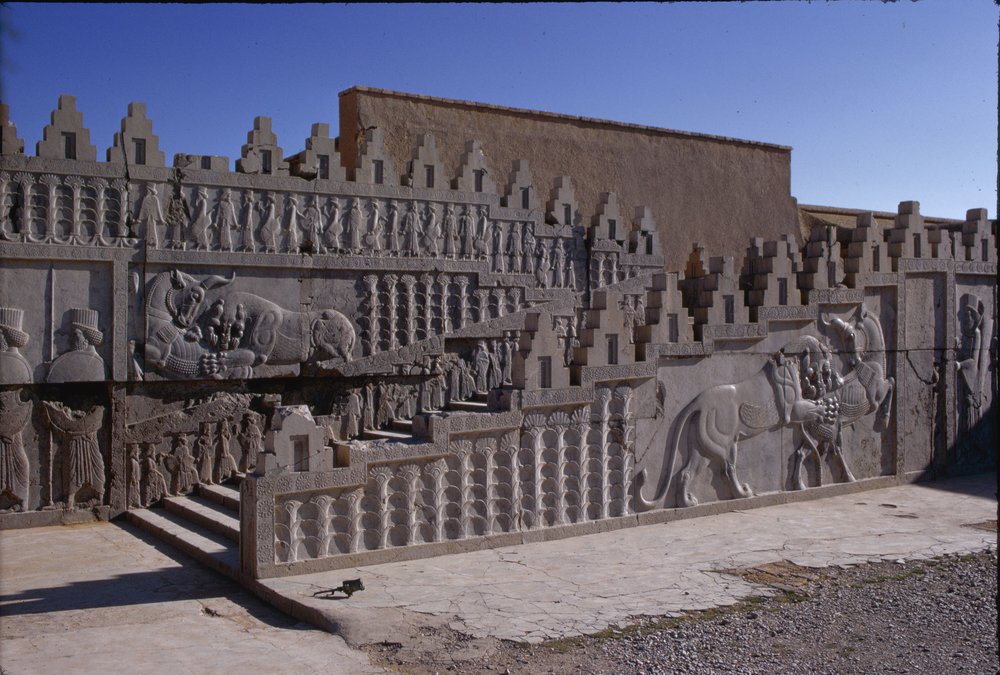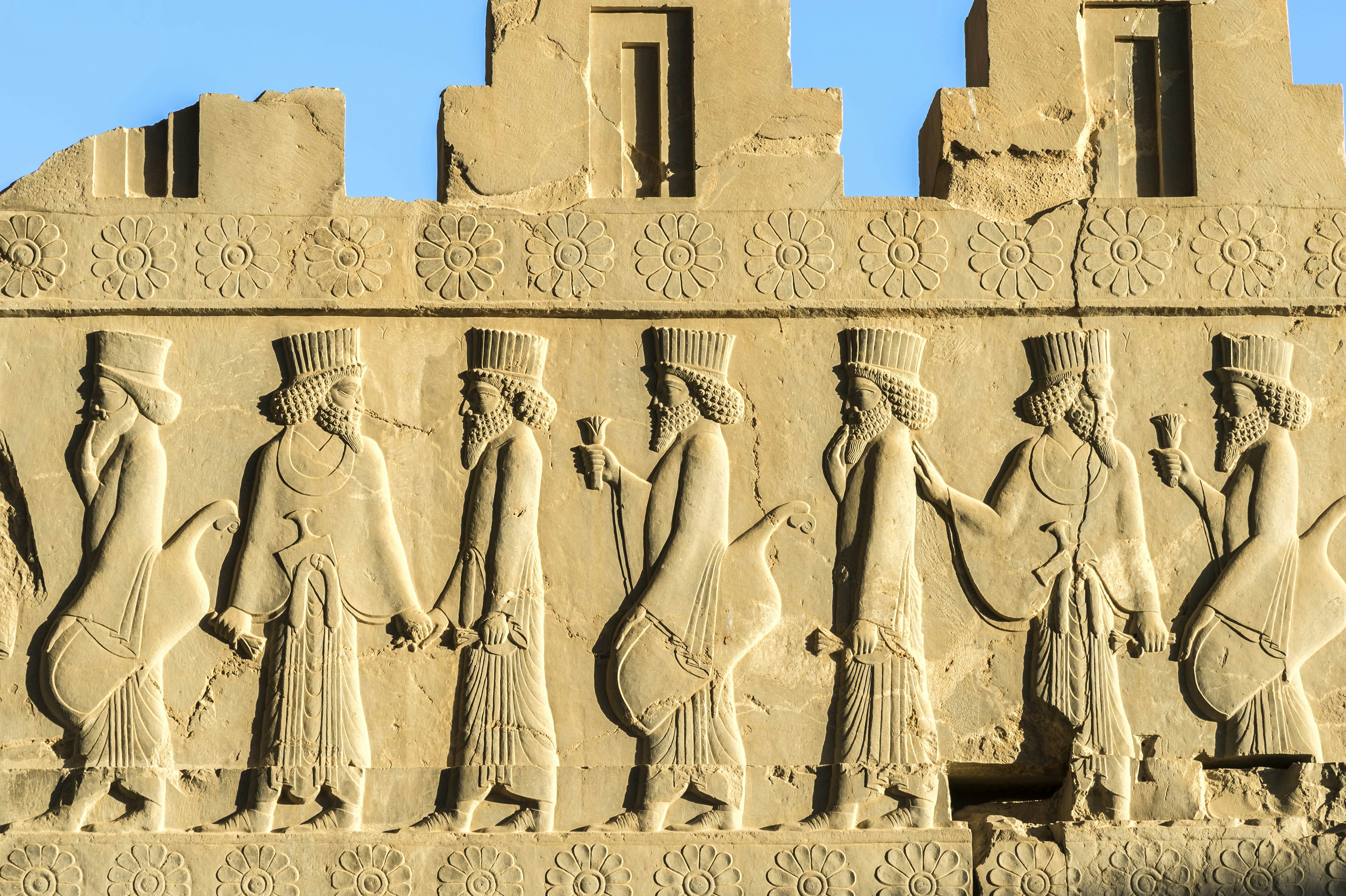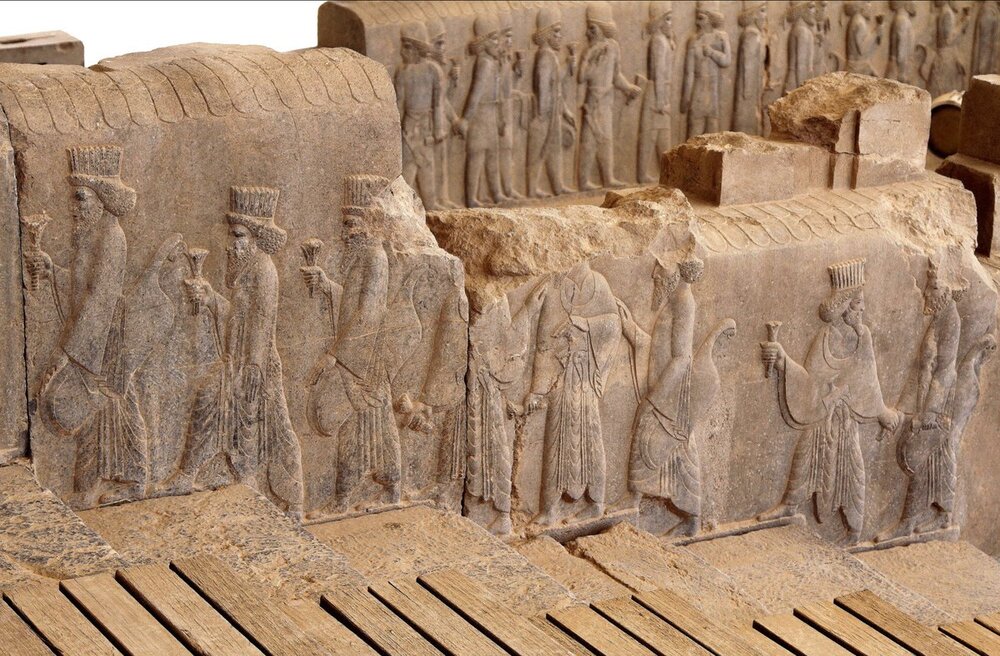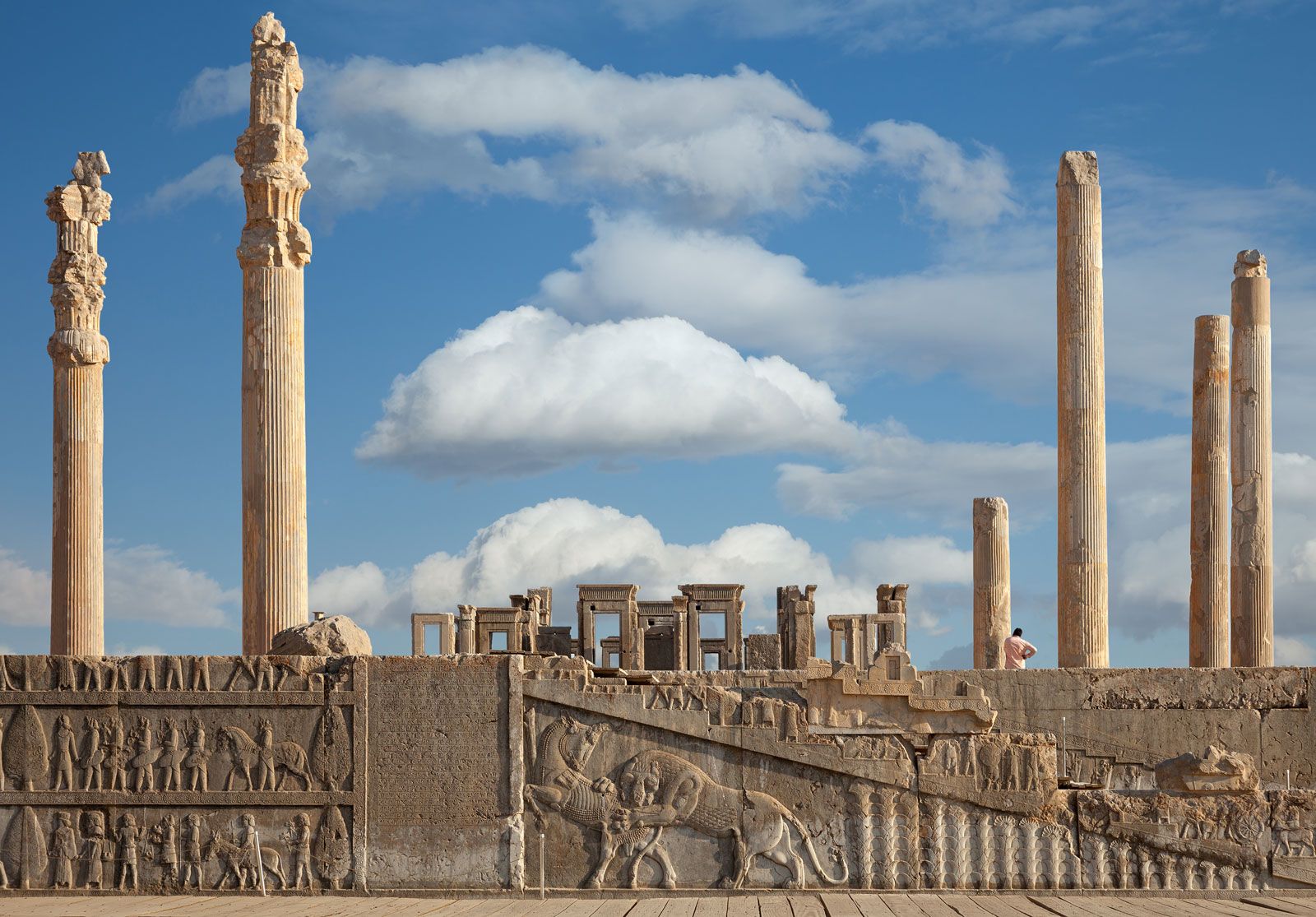Persepolis, the ceremonial capital of the ancient Achaemenid Empire in modern-day Iran, is one of the most significant archaeological sites in the world. It is a testament to the grandeur and power of the Achaemenid kings and their empire, which spanned much of the ancient world. Among the many remarkable features of Persepolis, the reliefs adorning the Apadana Staircase of the Apadana Palace stand out as some of the most iconic and historically rich depictions of the empire’s culture, diversity, and political structure.
The Apadana Palace and Its Significance
The Apadana Palace, constructed under the reign of Darius I in the mid-5th century BCE, served as the primary ceremonial hall for the Persian kings. It was a place of grand feasts, royal audiences, and the annual Nowruz (Persian New Year) celebrations, where tribute-bearing delegations from all corners of the empire would gather to honor the king.

The Apadana Staircase features a series of reliefs that line the steps, each illustrating a historical event, cultural exchange, and the vast expanse of the empire. These artistic carvings provide insights into the diverse peoples that made up the Achaemenid Empire, emphasizing the empire’s unity and the king’s central role as a unifier.
Symbolizing Empire and Diversity
The reliefs on the Apadana Staircase depict representatives from 23 different nations, all bringing tributes to the Persian king, who is depicted as the central figure in the reliefs. The delegations include people from various regions such as Elam, Egypt, India, Lydia, and even as far as Ethiopia, each offering different forms of tribute, from animals to precious metals, fabrics, and spices. This array of offerings symbolizes the cultural diversity and vast territorial reach of the Achaemenid Empire.
What makes these reliefs particularly significant is their depiction of the equality and respect among the different peoples of the empire. The delegations are shown with equal dignity and importance, reflecting the Persian rulers’ policy of tolerance and respect for the diverse cultures and religions within their empire. Despite differences in dress, appearance, and customs, these nations were united under the authority of the Persian king, whose reign represented stability and prosperity.
Artistic Mastery and Political Symbolism
The artistic achievement of the Apadana reliefs is not only in their craftsmanship but also in their symbolic and political messaging. The intricate details of the figures, their attire, and their facial expressions speak volumes about the sophistication of Persian artists. The visual language of the reliefs was designed not just to document events but to communicate the power, stability, and grandeur of the empire.

The king, Darius I, and later Xerxes I, are depicted as larger than life, seated on a throne, symbolizing their divine right to rule and their role as protectors of peace and order. The delegations, while depicted in varying sizes and outfits depending on their status and origin, are presented in respectful and ceremonial poses. This visual hierarchy reinforces the king’s power while showcasing the respectful diplomacy that characterized the Achaemenid rulers’ relationships with their subjects.

The inclusion of Greek, Roman, and Egyptian architectural and artistic elements in the reliefs reveals the interconnectedness of Persian culture with other ancient civilizations. The influence of the earlier Mesopotamian art is also evident, yet the Persians managed to create a unique style that stood apart, emphasizing harmony, order, and grandeur rather than conflict.
The Enduring Legacy of Persepolis
Despite the destruction of Persepolis by Alexander the Great in 330 BCE, the Apadana Staircase reliefs have endured for over two millennia. Today, they stand as a powerful symbol of the ancient Achaemenid Empire’s remarkable achievements, showcasing not just the power of the kings but also the cultural exchange that took place within the empire. Persepolis, and specifically the Apadana Staircase, continues to fascinate scholars, historians, and visitors alike, offering valuable insights into the ancient Persian world and the enduring influence of the Achaemenid Empire.

Conclusion
The Apadana Staircase reliefs of Persepolis are far more than just artistic masterpieces—they are a testament to the grandeur and unity of the Achaemenid Empire. These intricately carved depictions not only showcase the diversity and complexity of the empire but also serve as a reminder of the artistic and political sophistication of ancient Persia. The reliefs continue to inspire admiration, offering a glimpse into the powerful and peaceful reign of one of history’s greatest empires.

